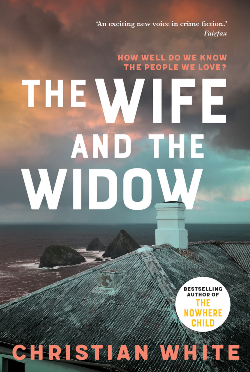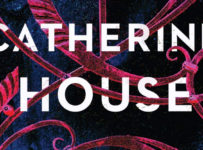
If the afterword is to be believed, the real star of The Wife and the Widow, Christian White's second novel, is White's own wife. At a time when White had an ensemble, a location, and a murder scene, it was his wife who told him who the murderer and victim should be. Quite how The Wife and the Widow would have worked without this information is mysterious. After the initial success of the continent hopping The Nowhere Child, White returns with a mystery set entirely within Australia. It hinges on a piece of narrative trickery that may not quite work, but at least it's different.
When Kate Keddie's husband doesn't return from a conference that he never attended, she visits Belport Island to try to track him down. As the title suggests, she doesn't like what she finds there. In alternating chapters, amateur taxidermist and year round Belport resident Abby Gilpin becomes increasingly uncomfortable with her husband's behaviour in the tourist off-season.
The refreshing part of both The Wife and the Widow and Chris Hammer’s Silver is that they show that Australia has more than one weather mode, and that the country can be miserable in the dry and the wet. It's an important distinction, and Belport is claustrophobic, depressed, and damp: a deadly combination for a crime novel location if ever there was one.
The strength of The Wife and the Widow lies in the titular widow, around whom White constructs a protective carapace as the story progresses. From a self-admitted anaemic pushover, Kate finds her voice. White's wisest decision in the development of the character is to play her off her father-in-law Fisher, who goes against type as not the bastard father-in-law he is initially made out to be: there are deep wells of empathy for the entire Keddie family between these pages, and they pay the novel's greatest dividends.
The Wife chapters can't help but be lesser, festooned as they are with clues and crumbs and the not-actually-quirky sideline that Abby has in taxidermy. White also hasn't proofed his Abby chapters enough: one begins with Abby being called in for a work shift, and leaving directly after breakfast; on the way she sees her husband's car and goes to talk to him; White describes the bitter weather of the afternoon, after which Abby continues on to her morning shift. Out of nowhere—and certainly avoid the blurb if you can—White suddenly goes hard on the Gilpin patriarch's temper, and the development lacks any finesse. Eventually we will come to understand why.
The Wife and the Widow's fulcrum will either work for the reader or tip them over the edge; certainly, if you're tearing through it (it is, realistically a 24 hour read at best), you might miss the sleight of hand and scratch your head as you leaf back in search of the turning point. It is either mind blowing or a flatliner, which suggests that it is not as well-implemented as it could, and should, have been. White is taking a bow without having walked the tightrope.
The Wife and the Widow's entire schtick is in its construction. While Kate and Belport are put together well, Abby is a victim of the demands the story makes of her. White withholds slightly too much until he drops it all on one page and asks the reader to pick up the pieces, rendering a more than functional small town crime mystery into something of a chore. The Wife and the Widow requires more effort to parse than it strictly warrants, but its atmosphere and character work carry it across the line.


